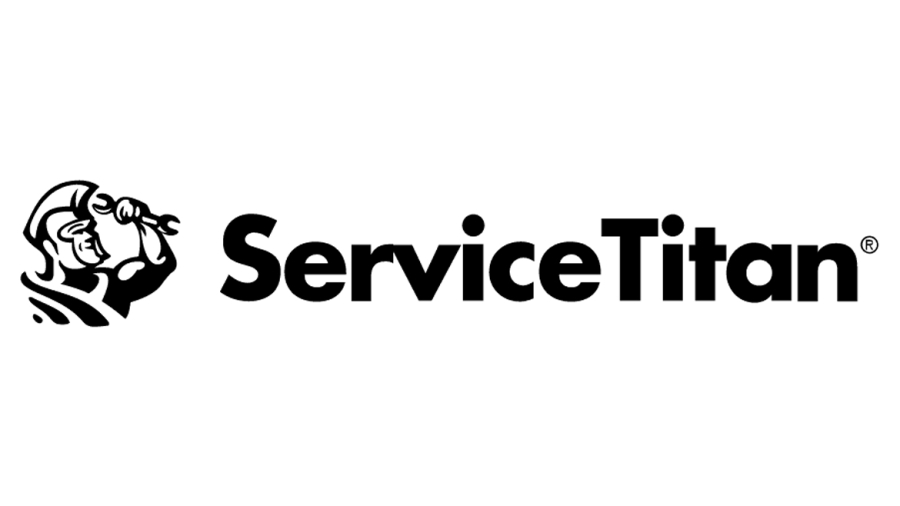Opting for fiber optic installation companies can offer numerous advantages when setting up a high-speed and reliable network. These fiber optic experts
Top Reasons to Invest in Structured Cabling New Jersey
White hexagon tiles blend timeless elegance with modern style, offering versatility and durability for stunning bathrooms, kitchens, and accent walls
12 Benefits of Switching to a Managed IT Support Service
The Sp5der Clothing Shop is now offering the latest Sp5der Hoodie designs & Color with Fast Shipping 24/7 and Discounts of up to 30% on Sp5der Hoodies.
How Titan Pro’s ServiceTitan Consultants Boost Your Strategy
Here’s an in-depth look at how ServiceTitan consultants can transform your strategy and boost your business performance. 1. Crafting a Custom ServiceTitan Strategy
How iPhone 11’s A13 Bionic Chip Enhances Performance
The iPhone 11 has made waves since its launch, thanks largely to its powerful A13 Bionic chip. This innovative piece of technology redefines.
Save Big with Second Hand Samsung Phones: A Buyer’s Guide
In this guide, we’ll explore the benefits of buying second hand Samsung phones, what to look out for, and how to ensure you’re getting the best deal.
Managing Transparency in the Workplace for Success
Transparency in the workplace is crucial for building trust, promoting collaboration, and enhancing employee satisfaction. Productivity Tracker Software is a solution for this. When employees feel they are part of an open and honest work environment, they become more engaged, motivated, and productive. However, maintaining transparency can be challenging. With the right tools and strategies, businesses can create a transparent culture that benefits everyone.
Why Transparency Matters
Workplace transparency goes beyond sharing information. It involves open communication, clear expectations, and a culture where employees feel valued and heard. Prioritizing transparency leads to:
- Higher Employee Engagement: Trust is built through transparency, leading to greater employee engagement. Engaged employees are more committed to their work and the company’s goals.
- Better Collaboration: Open sharing of information enables effective teamwork. Employees can make informed decisions, leading to innovative solutions and stronger teamwork.
- Increased Job Satisfaction: Transparency creates fairness in the workplace. Employees who feel informed and involved are more satisfied and less likely to seek other opportunities.
How to Manage Transparency
Achieving transparency requires effort from leadership and a commitment to open communication. Here are some strategies to manage workplace transparency:
1. Use Productivity Tracker Software
Productivity tracker software is an effective tool for maintaining transparency. These tools offer a clear view of employee performance, making it easier to track progress and ensure everyone aligns with company goals.
- Objective Measurement: Productivity tracker software provides unbiased data on time spent, task prioritization, and areas for improvement. This transparency helps employees understand their performance and its impact on the team.
- Clear Expectations: With clear benchmarks and real-time progress tracking, productivity tracker software ensures employees know what is expected of them. This reduces misunderstandings and aligns efforts with company goals.
- Continuous Feedback: Productivity trackers enable ongoing feedback, allowing managers to address issues promptly and provide necessary support. This fosters a transparent work environment.
2. Encourage Open Communication
Transparency begins with open communication. Encourage employees to share their thoughts, concerns, and ideas without fear. Achieve this through:
- Regular Meetings: Hold team meetings regularly where everyone can voice their opinions and ask questions. Make sure these meetings are inclusive and consider all perspectives.
- Anonymous Feedback Channels: Provide ways for employees to give anonymous feedback, such as suggestion boxes or online surveys. This allows employees to express concerns without fear of repercussions.
- Transparent Decision-Making: Share the reasoning behind key decisions with your team. Whether it’s a policy change or a strategic shift, explaining the “why” behind decisions builds trust.
3. Implement Transparent Processes
To ensure transparency, make sure that processes and policies are clear and accessible to all employees. This includes:
- Clear Documentation: Ensure company policies, procedures, and guidelines are well-documented and easily accessible. Employees should know where to find information and who to contact for clarification.
- Consistent Application: Apply policies consistently across the organization. Transparency means everyone is held to the same standards, regardless of their position.
- Visible Goals and Metrics: Share company goals and performance metrics with all employees. This helps everyone understand how their work contributes to the larger objectives and gives them a sense of purpose.
4. Promote a Culture of Trust
Trust is the foundation of transparency. To foster trust in the workplace:
- Lead by Example: Leaders should model transparent behavior by being open about decisions, admitting mistakes, and sharing successes. When employees see transparency at the top, they are more likely to adopt it.
- Recognize Honesty: Encourage employees to be honest and open, even when it’s difficult. Recognize and reward transparency in work and interactions.
- Provide Support: Create an environment where employees feel supported in taking risks and speaking up. Provide the resources they need and be approachable when they need guidance.
5. Leverage Technology for Transparency
Besides productivity tracker software, other technologies can enhance transparency. These include:
- Collaboration Tools: Use tools like Slack, Microsoft Teams, or Trello to facilitate communication and collaboration. These platforms allow real-time updates, shared documents, and open channels for discussion.
- Project Management Software: Tools like Asana, Monday.com, or Jira help teams stay organized and ensure everyone is on the same page. Transparent project management keeps tasks visible and deadlines clear.
- Data Analytics: Implement data analytics tools to monitor performance, track progress, and identify trends. Sharing these insights with employees keeps them informed and involved in decision-making.
Conclusion
Transparency is key to a productive and engaged workforce. By using productivity tracker software and embracing open communication, clear processes, trust-building, and technology, companies can create a transparent workplace that drives success. In today’s competitive environment, transparency isn’t just nice to have—it’s essential for thriving.
#ProductivityTrackerSoftware #WorkplaceTransparency #EmployeeEngagement #OpenCommunication #Leadership #Trust #WorkplaceCulture
Medical Scribe Resume: How to Write It Effectively?
Craft the perfect Medical Scribe resume with our expert tips. Learn how to highlight your skills, experience, and certifications to stand out at RevMaxx.
Ministers in the UK Opt Out of the EU Youth Mobility Program
Government Reaffirms Position Amidst Speculation
UK ministers have firmly reiterated their stance against any potential agreement with the European Union that would allow young people to live and work across EU countries. This comes after a report suggested that some aspects of such a deal could be part of broader negotiations with Brussels.
Rumors of Concessions Spark Clarification
The Times reported on Wednesday, citing unnamed government sources, that UK ministers might be willing to compromise on certain elements of a proposed mutual youth mobility system to secure favorable terms in other areas, such as reducing checks on UK food exports to the EU. A source suggested, “If we are serious about resetting relations with the EU, then we need to be prepared to give them some of the things that they want.”
However, a government spokesperson quickly dismissed these claims, stating, “We are not considering it; there are no plans for this, or any work being done on it.”
When pressed on whether the issue could arise in future talks with the EU, the spokesperson responded, “Our negotiating team has very clear red lines, and none of the preparatory work involves this.”
exam, exam, exam, exam, exam, exam, exam, exam, exam, exam, exam, exam, exam, exam, exam, exam, exam, exam, exam, exam, exam, exam, exam, exam, exam, exam, exam, exam, exam, exam, exam, exam, exam, exam, exam, exam, exam, exam, exam, exam, exam, exam, exam, exam, exam, exam, exam, exam, exam, exam, exam, exam, exam, exam, exam, exam, exam, exam, exam, exam, exam, exam, exam, exam, exam, exam, exam, exam, exam, exam, exam, exam, exam, exam, exam, exam, exam, exam, exam, exam, exam, exam, exam, exam, exam, exam, exam, exam, exam, exam, exam, exam, exam, exam, exam, exam, exam, exam, exam, exam, exam, exam, exam, exam, exam, exam, exam, exam, exam,exam, exam, exam, exam, exam, exam, exam, exam, exam, exam, exam, exam, exam, exam, exam, exam, exam, exam, exam, exam, exam, exam, exam, exam, exam, exam, exam, exam, exam, exam, exam, exam, exam, exam, exam, exam, exam, exam, exam, exam, exam, exam, exam, exam, exam, exam, exam, exam, exam, exam, exam, exam, exam, exam, exam, exam, exam, exam, exam, exam, exam, exam, exam, exam, exam, exam, exam, exam, exam, exam, exam, exam, exam, exam, exam, exam, exam, exam, exam, exam, exam, exam, exam, exam, exam, exam, exam, exam, exam, exam, exam, exam, exam, exam, exam, exam, exam, exam, exam, exam, exam, exam, exam, exam, exam, exam, exam, exam, exam, exam, exam, exam, exam, exam, exam, exam, exam, exam, exam, exam, exam, exam, exam, exam,
Labour and Conservative Parties Aligned on Youth Mobility
Both the Labour Party and then-Conservative Prime Minister Rishi Sunak rejected the idea of a youth mobility scheme in April when the EU formally proposed negotiating a bloc-wide program. The scheme would have allowed EU citizens under 30 to work and study in the UK for a fixed period and vice versa, resembling existing agreements the UK has with countries like Australia.
Labour has maintained a firm stance against reintroducing the free movement of people, and any youth mobility scheme has been viewed with similar skepticism, despite potential benefits.
EU’s Proposal and the UK’s Response
The EU’s proposal in April was reportedly an attempt to prevent the UK from pursuing individual deals with six EU countries, including France, Spain, and Germany. The French, in particular, were insistent that the UK should not be allowed to “cherry-pick” access to the EU post-Brexit.
A significant sticking point in the EU proposal was the provision allowing UK and EU students to pay home-fee status at each other’s universities for four years. This would mean significantly lower fees for EU students at UK universities, a financial burden that UK universities have said they cannot bear without additional government subsidies. Sources indicated that even a three-year version of this arrangement would fail to address the financial challenges.
Calls for Reconsideration
Despite the government’s firm stance, the Liberal Democrats have urged for a mutual youth mobility system to be agreed upon. Layla Moran, the party’s foreign affairs spokesperson, argued that such a scheme would rebuild ties with the EU and “give our young people fantastic opportunities to live and work across Europe, while also providing a much-needed boost to the UK economy – especially our hospitality sector.”
EU’s Perspective on Youth Mobility
In outlining the proposal earlier this year, European Commission President Ursula von der Leyen highlighted the benefits of youth mobility, stating, “The topic of youth mobility is in both our interests because the more we have youth mobility being on both sides of the Channel, the more we increase the probability we will be on good terms because the next generation knows each other very well.”
The UK government, however, remains resolute in its decision to reject any such deal, prioritizing its post-Brexit red lines over potential compromises with the EU.
Employee Experience with HRMS Leave Management Systems
Modern HRMS leave management systems are more than just tools for tracking leave; they are vital for enhancing employee experience, ensuring compliance.









